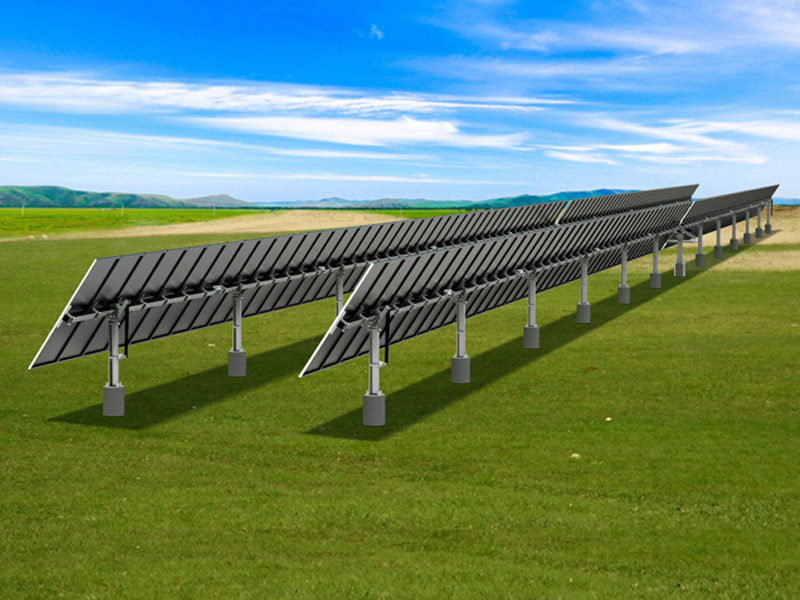La revolución solar en 2024
Un informe del IEEE revela que la energía solar representó el 70 % de la nueva capacidad energética mundial en 2024, con China (278 GW) y Estados Unidos (38 GW) estableciendo récords. La capacidad fotovoltaica mundial alcanzó los 2 TW, con China aportando 1 TW. Este crecimiento subraya el papel fundamental de los sistemas de seguimiento solar para impulsar la eficiencia.
¿Por qué los seguidores solares impulsan la eficiencia fotovoltaica?
1.Maximizar el rendimiento energético
Los seguidores solares ajustan los paneles para seguir al sol, aumentando la producción entre un 20 % y un 30 % en comparación con las instalaciones fijas. En las nuevas instalaciones de China, que suman 278 GW, un aumento del 10 % en la eficiencia gracias a los seguidores solares equivale a decenas de GW de energía adicional, suficiente para millones de hogares. En Estados Unidos, los seguidores solares ayudan a optimizar el uso del suelo para satisfacer la creciente demanda de energía solar.
2.Sinergia con BESS
La capacidad global de almacenamiento de energía en baterías (BESS) alcanzó los 126,1 GW en 2024 (el 60 % en China), superando a la energía hidroeléctrica de bombeo en EE. UU. Los seguidores solares alinean la producción solar con los picos de demanda, reduciendo la dependencia de los BESS. Por ejemplo, una planta de 100 MW equipada con seguidores solares genera energía de forma más constante, mejorando la estabilidad de la red.
3.Impulsando la energía baja en carbono
Las fuentes bajas en carbono (solar, eólica, nuclear, hidroeléctrica) proporcionaron el 40% de la electricidad mundial en 2024. Los seguidores solares maximizan la producción solar, lo que permite sustituir eficazmente a los combustibles fósiles; algo fundamental a medida que las energías renovables crecen pero aún no han superado la demanda.
Monturas de seguimiento en mercados clave
Dominio de China en 1 TWLos proyectos de servicios públicos en Gansu utilizan seguidores solares de doble eje para lograr una eficiencia récord.
EE. UU.Hito de S. BESS:Con una capacidad de almacenamiento de energía en baterías (BESS) de 25,7 GW, los seguidores solares permiten una instalación solar que ahorra espacio en estados como Texas.
Innovaciones futuras
El informe hace hincapié en la I+D en tecnología fotovoltaica y de baterías. Para los seguidores solares, esto significa:
- Controles de IA para predecir el clima y optimizar los ángulos
- Diseños resistentes al clima para su despliegue global
- Sistemas modulares para una integración perfecta de energía solar y almacenamiento
Conclusión
Dado que la energía solar representa el 70 % de la nueva capacidad instalada, los seguidores solares son la clave para una red eléctrica renovable y fiable. Transforman el potencial solar en energía constante, demostrando que la eficiencia es fundamental para la descarbonización.


 L-V 9AM a 18:00
L-V 9AM a 18:00  admin@cowellxm.com
admin@cowellxm.com
 326, No.580 Jiahe Road, Huli District, Xiamen City,Fujian Province, China.
326, No.580 Jiahe Road, Huli District, Xiamen City,Fujian Province, China.




